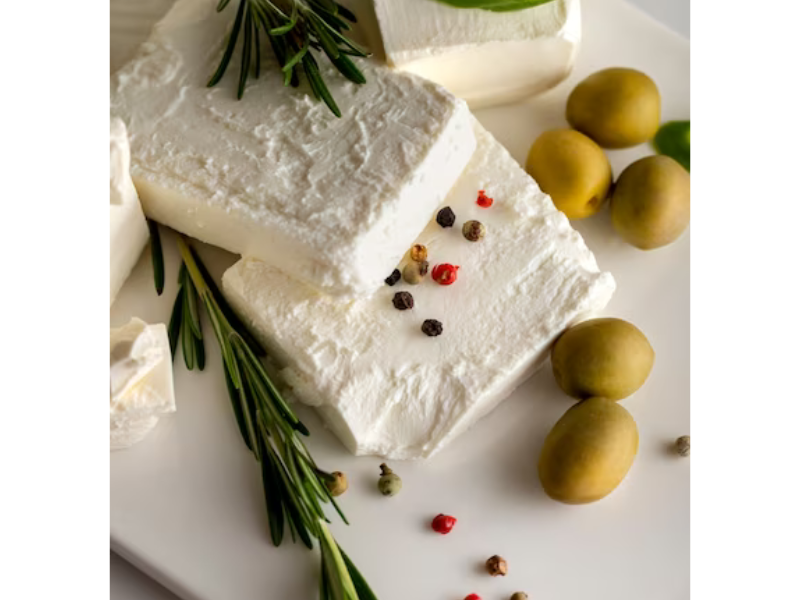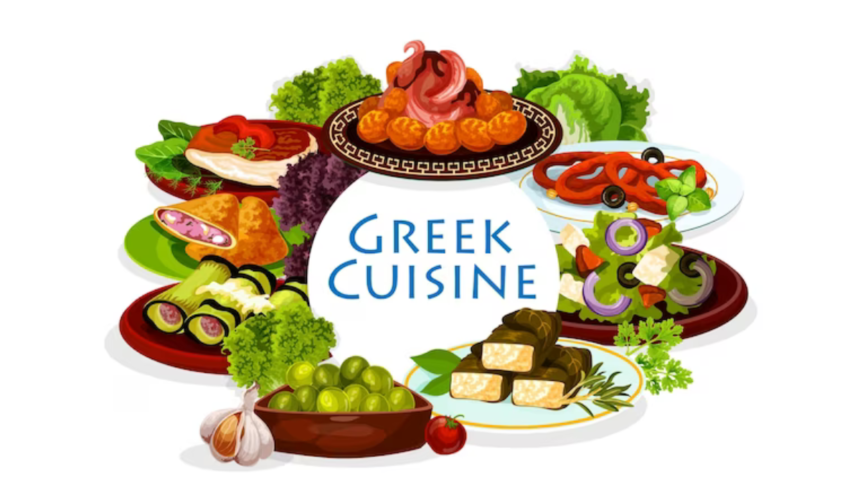Greek Cuisine: A Culinary Journey through the Land of Gods and Goddesses
Introduction to Greek Cuisine
Greek cuisine is more than just food; it is a reflection of the country’s rich history, diverse landscape, and vibrant culture. Influenced by centuries of invasions, conquests, and trade, Greek cuisine is a melting pot of flavors, textures, and ingredients that have been passed down through generations. From fresh seafood to savory meats, aromatic herbs to tangy cheeses, Greek cuisine is a celebration of the bounty of the land and sea.
The History of Greek Cuisine
The roots of Greek cuisine can be traced back to ancient times, when the ancient Greeks relied on local ingredients such as olive oil, wine, honey, and grains to sustain themselves. With the arrival of the Roman Empire, Greek cuisine was influenced by Mediterranean flavors and techniques. During the Byzantine period, Greek cuisine evolved further with the introduction of new spices, fruits, and vegetables.
Greek cuisine reached its zenith during the Ottoman Empire, when Turkish influences brought flavors such as yogurt, eggplant, and lamb to the Greek table. In the early 19th century, Greek cuisine was further enriched by the introduction of French and Italian cooking techniques. Today, Greek cuisine continues to evolve, blending traditional recipes with modern culinary trends.
The Ingredients of Greek Cuisine
Greek cuisine is known for its use of fresh, wholesome ingredients that are sourced locally and seasonally. Olive oil is a staple in Greek cooking, used for frying, sautéing, marinating, and dressing salads. Olives, both green and black, are enjoyed as a snack or added to dishes such as pastas and stews.
Greek cheeses such as feta, kasseri, and graviera are renowned for their rich, tangy flavors and crumbly textures. Greek yogurt, made from strained cow’s or sheep’s milk, is creamy and tangy, enjoyed with honey, nuts, and fruit for breakfast or dessert. Herbs and spices such as oregano, mint, dill, and garlic are used to add complexity and depth of flavor to Greek dishes.
Seafood plays a prominent role in Greek cuisine, with a variety of fish and shellfish caught fresh from the Aegean and Ionian Seas. Grilled octopus, fried calamari, and steamed mussels are popular appetizers, while baked fish, seafood soups, and seafood risottos are enjoyed as main courses.
Meats such as lamb, pork, and poultry are staples in Greek cuisine, often roasted, grilled, or stewed with vegetables and herbs. Souvlaki, gyros, and kebabs are popular street food options, while moussaka, pastitsio, and stifado are classic Greek dishes that are enjoyed at home and in restaurants.
Traditional Greek Dishes
Greek cuisine is characterized by its simplicity, freshness, and bold flavors. Some of the most iconic Greek dishes include:
1. Moussaka: A layered dish of eggplant, minced meat, tomatoes, and béchamel sauce, baked until golden and bubbly.
2. Souvlaki: Skewered and grilled marinated meat, typically served with pita bread, tzatziki sauce, and salad.
3. Spanakopita: Phyllo pastry filled with spinach, feta cheese, and herbs, baked until crispy and golden.
4. Greek Salad: A refreshing mix of tomatoes, cucumbers, onions, olives, and feta cheese, dressed with olive oil and oregano.
5. Gyros: Slices of seasoned meat, usually pork or chicken, served in pita bread with tomatoes, onions, and tzatziki sauce.
6. Dolmades: Grape leaves stuffed with rice, herbs, and ground meat, simmered in a lemony sauce until tender.
7. Baklava: Layers of phyllo pastry, nuts, and honey syrup, baked until crispy and drizzled with syrup.
8. Taramasalata: A creamy dip made from fish roe, bread crumbs, olive oil, and lemon juice, served with bread or vegetables.
9. Pastitsio: A Greek version of lasagna, featuring layers of pasta, minced meat, tomato sauce, and béchamel sauce.
10. Stifado: A hearty stew made with beef or rabbit, onions, tomatoes, and spices, slow-cooked until tender.
Regional Variations in Greek Cuisine
Greek cuisine varies from region to region, reflecting the diverse landscapes and cultural influences that have shaped the country’s culinary heritage. In the northern regions of Greece, such as Macedonia and Thrace, dishes tend to be heartier and more meat-centric, with influences from Balkan and Turkish cuisines.
In central Greece, including the regions of Thessaly and Epirus, mountainous terrain and fertile valleys produce a bounty of fruits, vegetables, and grains. Dishes such as horta (wild greens), fasolada (bean soup), and yemista (stuffed vegetables) are popular in this region.
In the southern regions of Greece, including the Peloponnese and the islands of Crete and Rhodes, seafood plays a prominent role in the local cuisine. Olive oil, wine, and herbs are key ingredients in dishes such as fish souvlaki, stuffed grape leaves, and cheese pies.
On the islands of the Aegean Sea, such as Santorini, Mykonos, and Paros, fresh seafood, sun-ripened tomatoes, and aromatic herbs are used to create dishes that are light, flavorful, and vibrant. Meze, small plates of appetizers, are a popular dining style in these regions, with dishes such as grilled octopus, fried calamari, and fava bean puree.

Iconic Greek Ingredients
Greek cuisine is characterized by its use of high-quality, fresh ingredients that are sourced locally and seasonally. Some of the most iconic Greek ingredients include:
1. Olive Oil: Greek olive oil is prized for its fruity flavor, low acidity, and smooth texture. It is used for cooking, dressing salads, and marinating meats and vegetables.
2. Olives: Greece is home to a variety of olives, including Kalamata, green Halkidiki, and black Amfissa olives. They are enjoyed as a snack, added to salads, or used in cooking.
3. Feta Cheese: Made from sheep’s or goat’s milk, feta cheese is creamy, tangy, and crumbly. It is used in salads, pies, and pastries, and is enjoyed with olives and bread.
4. Greek Yogurt: Thick and creamy, Greek yogurt is strained to remove excess whey, resulting in a rich, tangy flavor. It is enjoyed with honey, nuts, and fruit for breakfast or dessert.
5. Seafood: Greek cuisine features a variety of fish and shellfish, including sea bass, red mullet, sardines, shrimp, and squid. They are grilled, fried, or stewed with herbs and lemon juice.
6. Honey: Greece is known for its high-quality honey, produced from wildflowers, thyme, and pine trees. It is used to sweeten desserts, teas, and yogurt.
7. Oregano: A staple herb in Greek cuisine, oregano adds a savory, earthy flavor to meats, vegetables, and salads. It is often sprinkled over feta cheese or grilled meats.
8. Mint: Fresh mint is used to flavor dishes such as lamb stew, cucumber salad, and yogurt dip. It adds a refreshing, aromatic note to both sweet and savory dishes.
9. Dill: An aromatic herb, dill is used to flavor fish, rice, and salads. It is often paired with yogurt, cucumbers, and lemon juice in traditional Greek dishes.
10. Eggplant: A versatile ingredient, eggplant is used in dishes such as moussaka, imam bayildi (stuffed eggplant), and briam (vegetable bake). It is often grilled, roasted, or fried before being added to dishes.
Greek Desserts
Greek cuisine is renowned for its rich, sweet desserts that are made with high-quality ingredients such as nuts, honey, phyllo pastry, and yogurt. Some of the most popular Greek desserts include:
1. Baklava: Layers of phyllo pastry, nuts, and honey syrup, baked until crispy and golden.
2. Galaktoboureko: A custard-filled pastry made with semolina, milk, and sugar, baked until golden and syrupy.
3. Loukoumades: Deep-fried dough balls drizzled with honey syrup and sprinkled with cinnamon and walnuts.
4. Rizogalo: Creamy rice pudding flavored with vanilla and cinnamon, served cold or warm.
5. Kataifi: Shredded phyllo pastry filled with nuts and honey syrup, baked until crispy and sweet.
6. Revani: A moist semolina cake infused with orange juice and syrup, topped with sliced almonds.
7. Portokalopita: A moist orange cake made with phyllo pastry, semolina, yogurt, and honey syrup.
8. Koulourakia: Butter cookies flavored with vanilla and shaped into twists or loops, enjoyed with coffee or tea.
9. Pasteli: A traditional Greek candy made with honey, sesame seeds, and nuts, shaped into bars or balls.
10. Loukoum: Soft, chewy Turkish delight flavored with rosewater, lemon, or pistachios, enjoyed as a sweet treat or gift.
The Significance of Greek Cuisine
Greek cuisine is not just about food; it is a reflection of the country’s history, culture, and identity. Food plays a central role in Greek social and religious traditions, from weddings and festivals to Orthodox Easter and Christmas celebrations. Many Greek dishes are rooted in ancient rituals and folklore, such as the tradition of baking a coin into a vasilopita (New Year’s cake) or eating kollyva (wheat porridge) during memorial services.
Greek cuisine is also a reflection of the country’s natural resources and climate, with dishes that emphasize fresh, seasonal ingredients such as olive oil, fruits, vegetables, herbs, and seafood. The Mediterranean diet, which is based on the traditional foods and cooking styles of Greece and other Mediterranean countries, has been recognized for its health benefits and longevity-promoting properties.
In recent years, Greek cuisine has gained international acclaim for its flavorful, wholesome dishes that emphasize quality ingredients and simple preparation techniques. Greek restaurants and food products are increasingly popular worldwide, with a growing demand for olive oil, feta cheese, yogurt, and honey from Greece.
Conclusion
Greek cuisine is a culinary journey through the land of gods and goddesses, with dishes that are rich in history, culture, and flavor. From savory moussaka and grilled souvlaki to sweet baklava and creamy yogurt, Greek cuisine is a celebration of the bounty of the land and sea. Influenced by centuries of invasions, conquests, and trade, Greek cuisine is a melting pot of flavors, textures, and ingredients that have been passed down through generations.
Whether you are dining in a traditional taverna in Athens, savoring seafood on the beaches of Santorini, or enjoying a homemade meal with a Greek family, the flavors and aromas of Greek cuisine are sure to transport you to the sun-drenched shores of the Mediterranean. So why not embark on a culinary journey through Greece and discover the delicious delights of this ancient and vibrant cuisine? Opa!
FAQs about “Greek Cuisine: A Culinary Journey through the Land of Gods and Goddesses”
- What makes “Greek Cuisine: A Culinary Journey through the Land of Gods and Goddesses” a captivating exploration of Greek food? “Greek Cuisine” offers a delightful journey through Greece’s culinary landscape, showcasing the flavors, traditions, and stories behind its iconic dishes. It provides an immersive experience, inviting readers to discover the rich heritage of Greek cuisine.
- Which aspects of Greek cuisine are covered in this book? This book covers a wide range of aspects of Greek cuisine, including traditional dishes, regional specialties, ingredients, and cooking techniques. From the sun-drenched islands of the Aegean to the mountain villages of the mainland, readers will explore the diverse flavors of Greece.
- Are specific Greek dishes featured in this culinary journey? Yes, “Greek Cuisine” features a curated selection of classic Greek dishes, such as moussaka, souvlaki, spanakopita, tzatziki, and baklava. Each dish is accompanied by background information, cultural insights, and tips for preparing it authentically.
- How does this book delve into the cultural heritage of Greek cuisine? This book delves into the cultural heritage of Greek cuisine by exploring its origins, influences, and significance in Greek society. Readers will learn about the historical and cultural context of Greek dishes, as well as the rituals and traditions associated with Greek culinary customs.
- Can readers expect to gain insights into the culinary traditions of different regions of Greece in this book? Absolutely! “Greek Cuisine” celebrates the regional diversity of Greek cuisine by featuring dishes from various parts of Greece. From the seafood-rich cuisine of the islands to the hearty mountain fare of the mainland, readers will discover the distinct flavors and culinary traditions of each region.
Advantages:
- Evocative language: The title “Greek Cuisine: A Culinary Journey through the Land of Gods and Goddesses” uses descriptive terms to evoke the rich cultural heritage of Greece, capturing the reader’s imagination.
- Cultural immersion: The title suggests a journey through Greek culinary traditions, offering readers insights into the mythology, history, and flavors of Greece.
- Gastronomic exploration: Readers can anticipate discovering a variety of Greek dishes, providing them with a comprehensive overview of the diverse culinary landscape of Greece.
- Practicality: By focusing on Greek cuisine, the title appeals to readers interested in exploring authentic and delicious Mediterranean dishes, providing them with recipes, tips, and techniques.
- Inspiration for travel: The title may inspire readers to visit Greece to experience its culinary delights firsthand, fostering a deeper connection to Greek cuisine and culture.
Disadvantages:
- Lack of specificity: While Greek cuisine is mentioned, the title does not specify which dishes will be explored or which regions of Greece will be covered, leaving readers uncertain about the scope of the content.
- Potential oversimplification: Focusing solely on Greek cuisine may oversimplify the richness and diversity of Greek culinary traditions, overlooking other cultural and regional specialties.
- Accessibility of ingredients: Some Greek dishes may require specific ingredients that are difficult to find outside of Greece or major culinary hubs, limiting the practicality of the recipes for some readers.
- Cultural appropriation: Without proper context and understanding, celebrating Greek cuisine could risk appropriating cultural elements without acknowledging their significance or respecting their origins.
- Dietary restrictions: While Greek cuisine is generally healthy, some dishes may not be suitable for individuals with dietary restrictions or preferences, potentially alienating some readers.
















